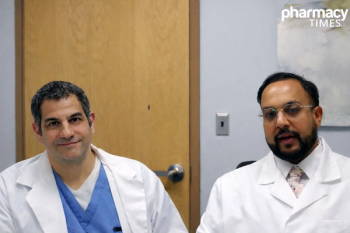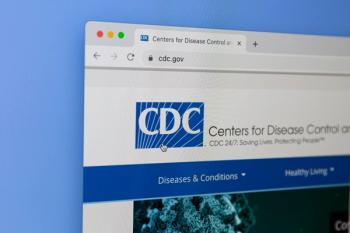
- Fall 2022
- Volume 16
- Issue 2
Consider the Commissioned Corps of the United States Public Health Service for a Rewarding Pharmacy Career
Working for the USPHS offers unique compensation and quality-of-life benefits.
When I first learned about the United States Public Health Service (USPHS) Commissioned Corps Pharmacy Program at an on-campus career fair in my first year of pharmacy school, I immediately knew that I wanted to pursue it after graduation. Nearly 23 years later, I am still incredibly grateful that I came across Capt. (retired) Bob Brady that fateful day.
At the time, the main draw for me was the opportunity to practice pharmacy with full access to patient medical records, compared with the more limited scope of practice in a community environment. The business models of most community pharmacies have since expanded beyond dispensing, but the USPHS still presents exciting and rewarding opportunities that many graduates unfortunately remain unaware of.
Despite this lack of awareness, I believe the USPHS is a career choice worthy of new pharmacists’ attention in this era of escalating costs of living, student loan debt, high costs of health insurance, and other financial challenges. A career in the USPHS is professionally and economically rewarding, and I have come across many people who wished they had learned about this career path earlier in their professional lives.
There are 8 uniformed services in the United States: USPHS, Space Force, National Oceanic and Atmospheric Administration Commissioned Corps, Air Force, Army, Coast Guard, Marines, and Navy. Each of these services has fundamental differences in their objective and mission but share common threads in terms of compensation and benefits to their members.
USPHS has undergone a number of tremendous transitions over the past several years, but I still believe it is the best setting in which to practice pharmacy. With a long and rich history that dates back to the mass migrations to the newly formed United States in the late 1700s, today’s commissioned officers work in various federal agencies such as the FDA, CDC, National Institutes of Health, Bureau of Prisons, Indian Health Service, and more.
The USPHS corps offers primary arenas of service to our country1:
- Active duty: This is “a full-time deployable uniformed service whose Public Health Service officers seek employment at government agencies.” Personnel on active duty are divided into various categories based on their professional discipline. The physician, dentist, and veterinarian categories accept applications year-round. Other categories (including the pharmacist category) accept applications during preannounced periods. It is important to check the USPHS Commissioned Corps website regularly or speak to a recruiter about upcoming announcements.
- Public Health Emergency Response Strike Team (PHERST): PHERST “is an active-duty deploymentoriented team with high-level clinical skills and the flexibility to deploy within hours in response to national or public health emergencies.”
- Ready Reserve Corps (RRC): This division “allows individuals to serve in uniform part time while maintaining civilian employment. Officers in the RRC drill weekend per month and weeks per year and deploy in response to public health emergencies” along with their active-duty counterparts.
- Commissioned Officer Student Training and Externship Program (COSTEP): This program “is a highly competitive short-term program for students obtaining their qualifying degrees. Junior COSTEPs serve on active duty for to days during school breaks. Senior COSTEPs serve on active duty while attending their final year of academic study with a service obligation equal to twice the time sponsored upon graduation.” It is important to note that applications to this program are limited to a published duration, and a limited number of completed application packets are accepted each year.
The financial compensation realized through the corps is highly competitive. When comparing career tracks, many individuals first evaluate pay or compensation, but using this method without factoring in the other value-added benefits may skew the conclusions. For example, USPHS offers a generous leave package, including days of paid annual leave in addition to other kinds such as station leave (covering assignments only for part of the workday), parental leave, unlimited sick leave, and others. Another great benefit is the post-9/11 GI Bill, which officers may use directly or pass on to their dependents.
Other value-added benefits include potential qualification for a sign-on bonus, federal and state tax savings, low-cost health and dental insurance (for the officer and family), retirement pay eligibility, Veterans Affairs benefits, military discounts, low-cost life insurance for the officer and family, opportunities for student loan repayment, and more.
All of this may seem like an overwhelming amount of information, but the overarching point is that the Commissioned Corps offers a unique setting in which to practice pharmacy while also offering a pay and benefits structure that can fit the needs of today’s pharmacists.
ABOUT THE AUTHOR
Kofi Sallar, PharmD, MS, BCPS, RPh, graduated from the University of Nebraska Medical Center in 2003 and joined the active-duty United States Public Health Service that year. He completed his PGY1 residency at the Gallup Indian Medical Center in New Mexico and worked with the Indian Health Services from 2003 until 2020. He now serves as chief of pharmacy services at the Federal Correctional Institution, La Tuna, in Anthony, Texas.
REFERENCE
How To Apply. US Public Health Service. Accessed September 6, 2022. https://www.usphs.gov/apply-now
Articles in this issue
about 3 years ago
Trauma-Informed Care Is an Essential Skill for Pharmacistsabout 3 years ago
Student Pharmacists Can Play Important Role as Patient Advocatesabout 3 years ago
Pharmacy Students Can Improve Gender Equity in Clinical Researchabout 3 years ago
Pharmacogenomics Offers a Glimpse Into the Future of PharmacyNewsletter
Stay informed on drug updates, treatment guidelines, and pharmacy practice trends—subscribe to Pharmacy Times for weekly clinical insights.













































































































































































































